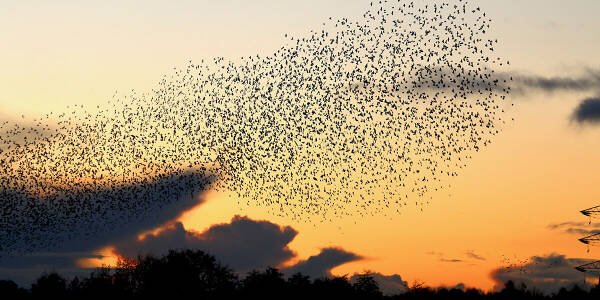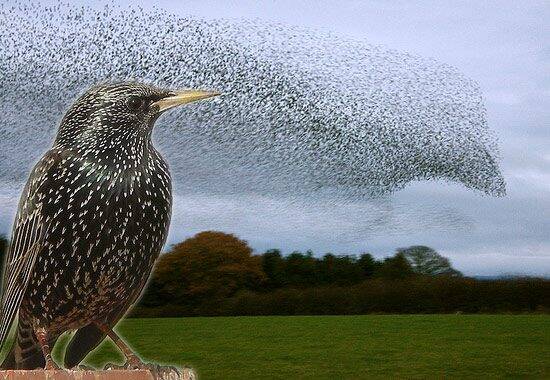This article introduces you to the top ten most spectacular wildlife on earth.
10. Whale shark
The world's largest fish was once thought to be a solitary giant, but its reputation as a loner has recently been turned upside down. Large pods of whale sharks, which can grow up to 12 meters long, are found off the east coast of Mexico, especially in the eastern Yucatan Peninsula, where 420 sharks were found during a 2009 aerial survey. Scientists have discovered that - aggregates known as "Afuera" feed on densely packed fish eggs.
9. Wildebeest
The famous wildebeest migration in Africa's Serengeti is actually a giant, endless clockwise rotation of, yes, wildebeest, but also zebra, gazelle, eland and impala, numbering an estimated 1.5 million animals . Of course, you won't see them all at the same time, but where should you go to get the most numbers? Well, arguably, this would be where they would have to cross the Mara River - tour operators say it's not uncommon for 10,000 wildebeest to cross the Mara River in a single day, with 100,000 recorded.
8. Common dolphin
dolphins.html">Dolphins may be among the largest gatherings of marine mammals in the world. There have been reported sightings of pods of 1,000-2,000 short-beaked dolphins off the Pembrokeshire coast of Wales, while a pod of 3,000-5,000 bottlenose dolphins has been reported off the coast of Costa Rica. But a 2013 incident near San Diego, California, surpassed both of these – a pod of common dolphins measured 11 kilometers long and 8 kilometers wide and contained an estimated 100,000 animals.
7. Snow Goose
Snow geese are among the most successful birds on Earth: Not only are there about 15 million of them, but their numbers are estimated to have increased fivefold or more in the past 30 years. They migrate between breeding grounds in the northern tundra of the Arctic and wintering grounds in the southern and eastern United States. A mid-December 2015 bird count recorded 126,000 geese at Squaw Creek National Wildlife Refuge, but the population could be as high as 400,000.
6. Amur Falcon
The Amur Falcon has the longest migration of any raptor, flying some 22,000 kilometers each year from Somalia, Kenya and South Africa to East Asia and back. Their numbers are also high, with up to 1 million birds estimated to make this journey. During their journey, they all reached the Doyang Reservoir in the northeastern state of Nagaland in India. In 2012, Indian authorities discovered that 120,000 to 140,000 birds were being slaughtered for consumption and sale each year, but swift conservation action quickly halted the slaughter.
5. Starling


In the UK, these small songbirds are famous for forming huge flocks, known as "whispers", about an hour before sunset in late autumn and winter. In Denmark, the starling calls in spring and autumn are said to be even more spectacular, with flocks of up to 1.25 million birds forming in some places on the west coast of Jutland, with the largest numbers in Riberbog and Tondebog.

During the summer, Iceland is home to about half of the Atlantic puffin population - some 3 to 4 million pairs of puffins travel there to breed and raise their young, with an estimated 1.5 or 3 million of them at Westman area. South coast island (Vestmannaeyjar). The Látrabjarg cliffs in Vestfirðir, the westernmost tip of Iceland, are also famous for their huge flocks of seabirds, including puffins, razorbills and guillemots.
3. Straw-colored fruit bat
Africa's greatest migration does not involve wildebeest, or indeed, a quadruped, despite being a mammal. Every November and December, 5 to 8 million straw-colored fruit bats inhabit Zambia's Kasanka National Park, feeding on seasonal fruits. Not only that, but they are also said to have chosen to feast in the 1-hectare Mushtu swamp forest within the park. Exactly how many trees can be seen is anyone's guess, but one tree is said to be home to 10 tons of bats.
2. Mexican free-tailed bat
While the numbers of African straw-colored fruit bats are staggering, Bracken Cave, a cave in southern Texas in the United States, has an even larger population, with about 20 million inhabiting it between March and October each year. Mexican free-tailed bats, the largest known bat colony in the world, may also have the largest concentration of mammals on Earth. They emerge every night, feed on insects, and are otherwise remarkable: they can fly at speeds in excess of 90 km/h and at altitudes in excess of 3 km.
1. Monarch Butterfly
Each year, monarch butterflies fly approximately 4,000 kilometers from their summer breeding grounds in the northern United States and Canada to their wintering grounds in the fir forests of the central Mexican state of Michoacán. They're remarkable not only for their lengthy migrations, but also for the sheer numbers they migrate—an estimated 56.6 million butterflies landed on the Monarch Butterfly Biosphere Reserve in the winter of 2014-15. However, this is a considerable decline from the 909 million expected in 1996-97. Habitat loss, climate change and pesticide use are major factors in monarch butterfly declines.
animal tags:
We created this article in conjunction with AI technology, then made sure it was fact-checked and edited by a Animals Top editor.